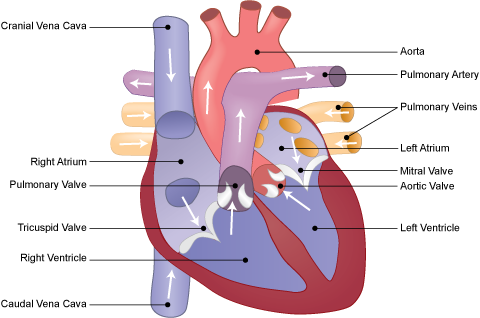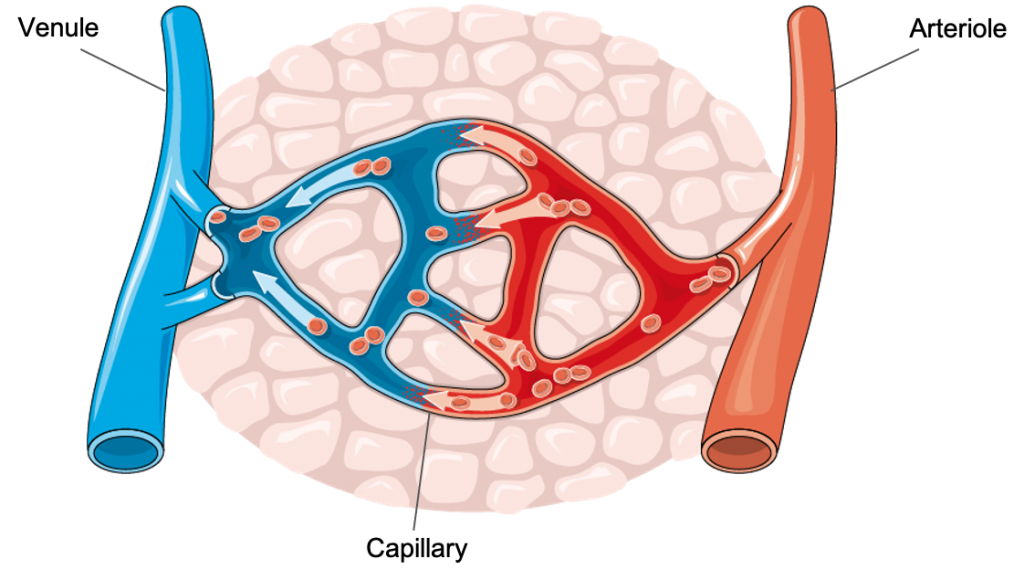Back to Course
Cardiovascular Physiology and Pathophysiology
0% Complete
0/0 Steps
-
Physiology
Structure and Function4 Topics -
Lymphatics and Edema Formation
-
The Microcirculation
-
Vascular Control3 Topics
-
The Cardiac Cycle
-
Determinants of Myocardial Performance7 Topics
-
Neuro-Control of Heart and Vasculature4 Topics
-
Electro-Mechanical Association4 Topics
-
Electrical Side of the Heart4 Topics
-
PathophysiologyDefining Heart Failure
-
Causes of Heart Failure
-
MVO2 and Heart Failure
-
Cardiac Output and Heart Failure7 Topics
-
Compensation for Circulatory Failure
-
Vascular Tone in Heart Failure
Lesson 1,
Topic 1
In Progress
Anatomy
Lesson Progress
0% Complete
The mammalian heart has 4 chambers and 4 sets of valves:
- 2 Atria (right and left)
- 2 Ventricles (right and left)
- 2 Atrioventricular (AV) valves
- Right AV valve (also known as the tricuspid valve)
- Left AV valve (also known as the mitral valve)
- 2 Semilunar valves
- Pulmonary valve
- Aortic valve

Circulation through the heart
Venous return from the systemic organs and tissues via cranial and caudal vena cavae > Right atrium > Right ventricle > Pulmonary arteries > Lungs > Pulmonary veins > Left atrium > Left ventricle > Aorta > Systemic arteries > Systemic organs and tissues > Venous return (back to beginning)
The pulmonary and systemic circulatory systems
The pulmonary and systemic circulations exiting the right and left ventricles, respectively, are in series. Both circulatory systems are composed of the following in sequence:
- arteries
- arterioles
- capillaries (within organs and tissues)
- venules
- veins (leading back to the heart)

The systemic circulation has many such systems arranged in parallel, each supplying different organs or tissues.
